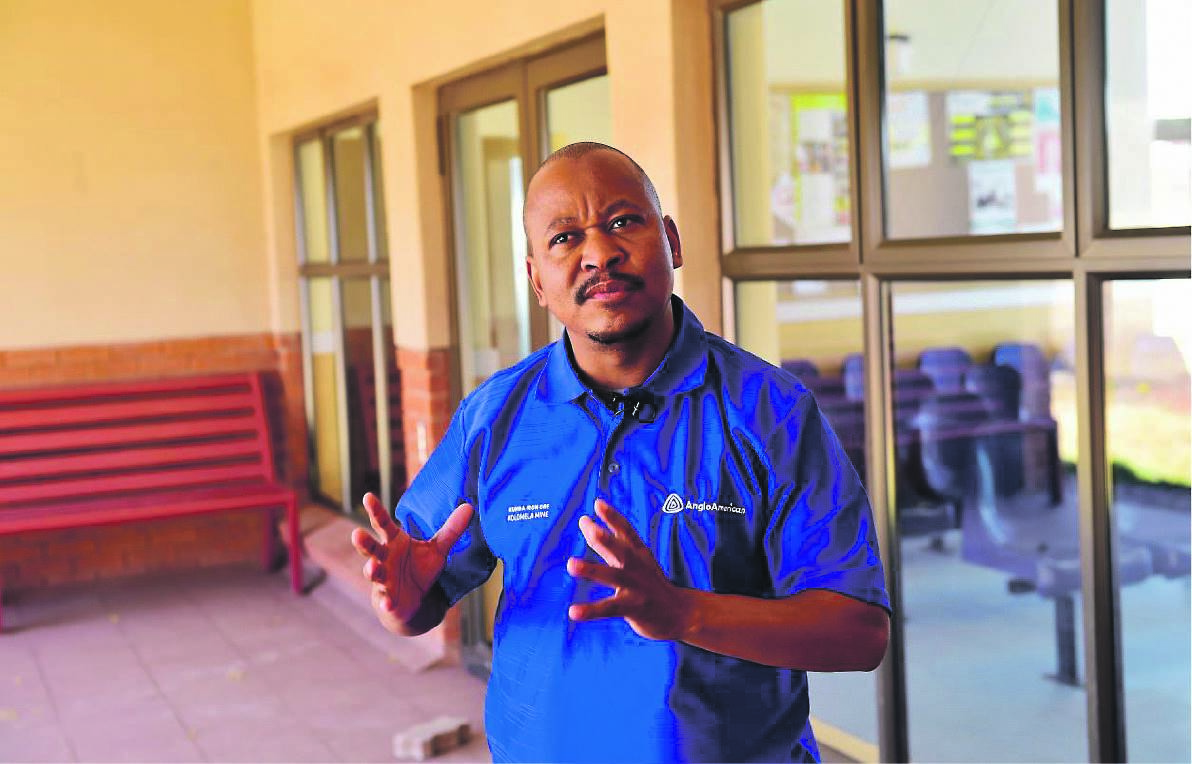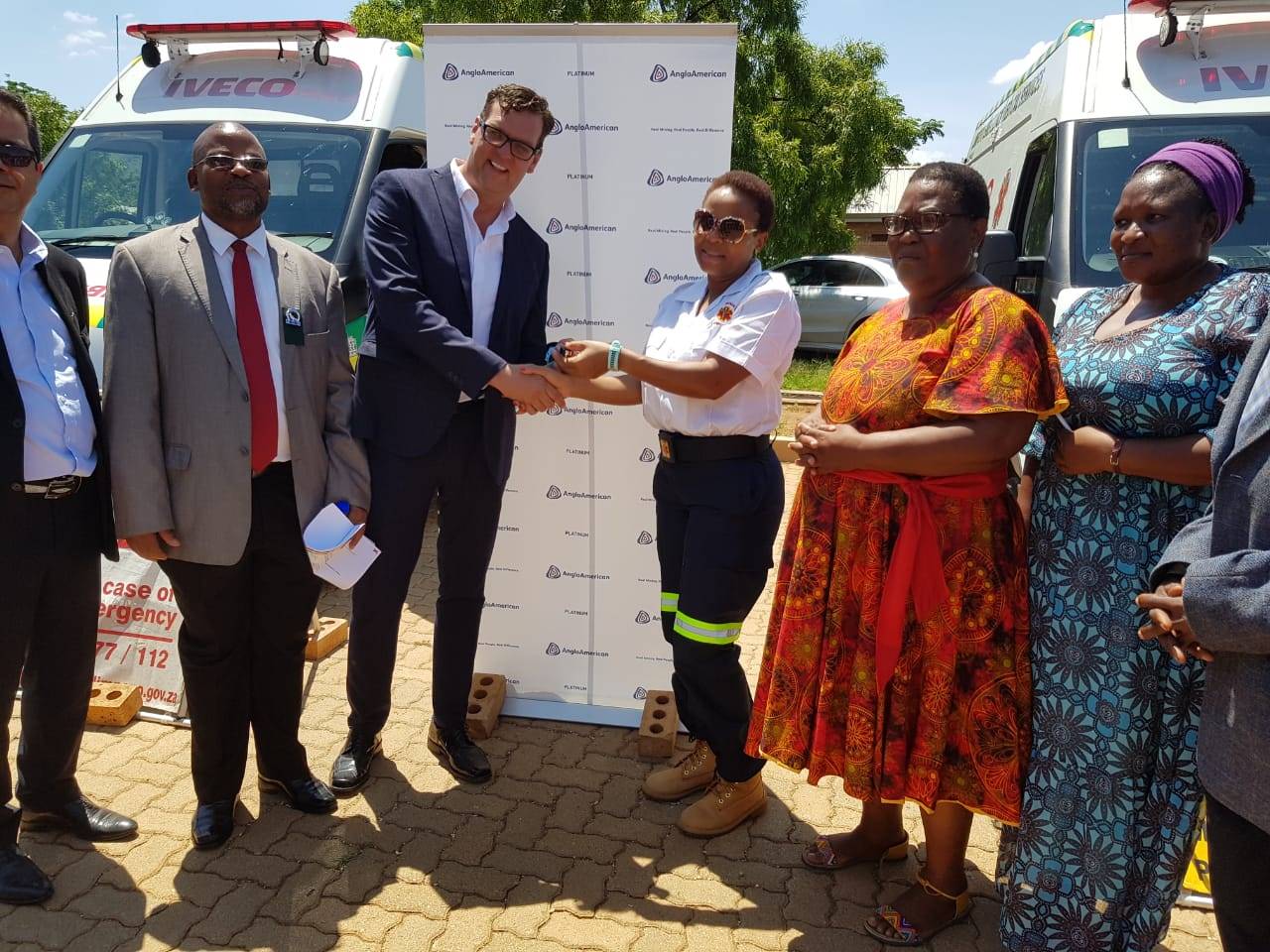As South Africa celebrates a generation of freedom, Anglo American acknowledges its deep roots in the country and looks ahead to its contribution in the next 25 years and beyond. Over the next five weeks experience 25 Reasons to Believe with City Press as we explore the economy, job creation, enterprise development, health, land reform, sustainability, education, technology and – most important of all – the communities
Former Public Protector Thuli Madonsela described Postmasburg Hospital in the Northern Cape as “one of the worst” healthcare facilities she had seen.
Madonsela visited the 45-bed hospital in 2013 after complaints from the town’s residents. She was dismayed to learn that the hospital had only one doctor on duty – two others had resigned in previous months. A big problem, she learnt, was staff quarters – the lone doctor lived in a converted garage.
Today – thanks to a R40 million community investment from Kumba Iron Ore, Anglo American’s iron ore business, which operates Kolomela mine near the town – this has changed.
Kolomela is one of the company’s newest mining operations – it started business in 2011. In the same year, Stats SA’s census found that Postmasburg – located 170km east of Upington – had a population of 30 000. Residents spoke mostly Afrikaans (16 000) and Setswana (10 000); and unemployment and associated social ills plagued the community.
George Benjamin, the public affairs manager at Kolomela, says investing in community upliftment has been a priority at the mine: “Postmasburg is an old established town with a relatively young mine, hence the social and economic landscape was not great. Our focus is to leave a positive legacy that will benefit the communities even beyond the existence of the mine.
“The healthcare sector in the area was faced with challenges, so it was one of the key areas that required a boost towards improving quality public healthcare services, hence our decision to prioritise it.”
During a tour of the new Postmasburg healthcare complex, Keaobaka Matilo, specialist in social and economic development at Kolomela mine, glows with enthusiasm.
“We built the fence around the complex, and we also did the security and lighting to enhance security at the complex,” he says, pointing at a steel fence perimeter. At the gate, a security guard checks the boots of cars entering and leaving the premises to ensure patients’ security.
The complex includes the old district hospital – the facility that so horrified Madonsela – in which the paediatrics ward and its casualty section has been upgraded. A theatre section will be refitted with modern equipment after construction is completed in August 2019.
Next to the hospital, a new clinic has been built, with flowerbeds flanking its entrance. The clinic’s corridors are lined with clean blue linoleum, with large windows and plastic chairs in waiting areas. It also has a medicine dispensary and pharmacist on site.
Speaking to Matilo, the clinic’s facilities manager, Sister Mary-Louise Vos, smiles and ushers us inside. The clinic’s services include baby immunisations, family planning, diabetic treatment, and antiretroviral and tuberculosis programmes for about 2 300 patients a month.
It has six consulting rooms, which is a far cry from the previous situation at the old hospital.
Vos says: “In those days, we had to do primary and secondary healthcare in that one building. There weren’t even proper divisions between the consulting rooms, so patients had no privacy.”
Across a parking lot from the clinic, more newly erected rooms offer counselling to victims of domestic violence and substance abuse.
Matilo says: “We realised that there are many social problems in the local community, so we decided to partner with nongovernmental organisations to establish a trauma and drug and alcohol abuse centre.”
Walking around the grounds, Matilo points out two large vehicles marked: Mobile Clinics – sponsored by Kolomela Mine.
“These are important for taking healthcare into the surrounding rural communities, to people who cannot travel to the healthcare complex,” he says. “Before this, people travelled 30km or more to get here.”
Another vehicle parked under a nearby thorn tree is marked: Northern Cape Rescue Response – donated by Kumba Iron Ore.
Matilo says the approach to healthcare was systematic with three focus areas – construction of a primary healthcare facility and mobile healthcare for rural areas; retention and attraction of key health professionals as well as construction of doctors’ living units; and a focus on secondary healthcare, which includes the hospital upgrade.
Matilo notes too that the new facility has also created jobs: “It was critical for us to provide all the necessary healthcare services in one central place. This brought relief to people in Postmasburg and the villages around it, but it also created jobs for nurses and drivers of the mobile clinics.”
Ambulances to the rescue
By Lucas Ledwaba
A few years ago, a pedestrian in Limpopo lay bleeding on a road for three hours after being hit by a vehicle, and later died.
The man’s brother later remarked that, although he had been born in the area, he had not once seen an ambulance there.
The death of his brother, he said, could have been avoided if an ambulance had arrived on the scene.
But Limpopo, where about 80% of the population live in rural areas and the road networks are poor, suffers from a chronic shortage of ambulances.
The provincial department of health said the ratio of ambulances to patients in the province remains – like in many other provinces – far above the national target of one emergency vehicle for every 10 000 people.
In an annual report, the department said that it had one emergency vehicle for every 47 290 residents. This was attributed to its inability to procure more ambulances due to financial constraints.
Anglo American Platinum has, as part of its efforts to help government serve the community, donated two ambulances to the provincial department of health.
The two vehicles cost R1.5 million.
The ambulances are now benefiting the Sekhukhune District Municipality and surrounding community of Ga-Phasha Makgalanoto. One of the ambulances is kitted out for obstetric emergencies and the other is for patient transport.
The head of social performance at Anglo American Platinum, Ted Muhajir, says the development and health of the community members in which the company operates is prioritised, and says the new ambulances will help ensure residents receive better care.
“We look forward to continuing to support this vital resource where possible,” said Muhajir.
The vehicles are desperately needed as statistics indicate the province has the highest maternal mortality rate in the country, with 185 deaths per 100 000 live births.
The UN’s Sustainable Development Goals sets the ratio at four deaths per 100 000, but the South African national average is 133 per 100 000 live births.
The lack of timely transport for expectant mothers who require emergency care is one of the major contributors to this scourge.
Added to that is the lack of adequate equipment required for generic emergency care vehicles to provide the right level of care.
Limpopo Health MEC Dr Phophi Ramathuba said during her budget speech for 2018/19 that the institutional maternal mortality ratio had decreased from 130 per 100 000 live births in the 2016/17 financial year to 111 per 100 000 live births in 2017/18.
She said that, while this represented progress, the department was “far from being satisfied, hence further efforts are in progress to reduce the institutional maternal mortality ratio as indicated in the UN’s Sustainable Development Goals”.
Premier Chupu Mathabatha says the provincial government aims to ensure that it eventually meets the national Emergency Medical Services norms regarding a response time of 15 minutes in urban areas and 40 minutes in rural areas.
Anglo American’s donation will help the province deliver on its mandate and ensure that lives, like those of the pedestrian who bled to death on a lonely rural road, are saved.




 Publications
Publications
 Partners
Partners










